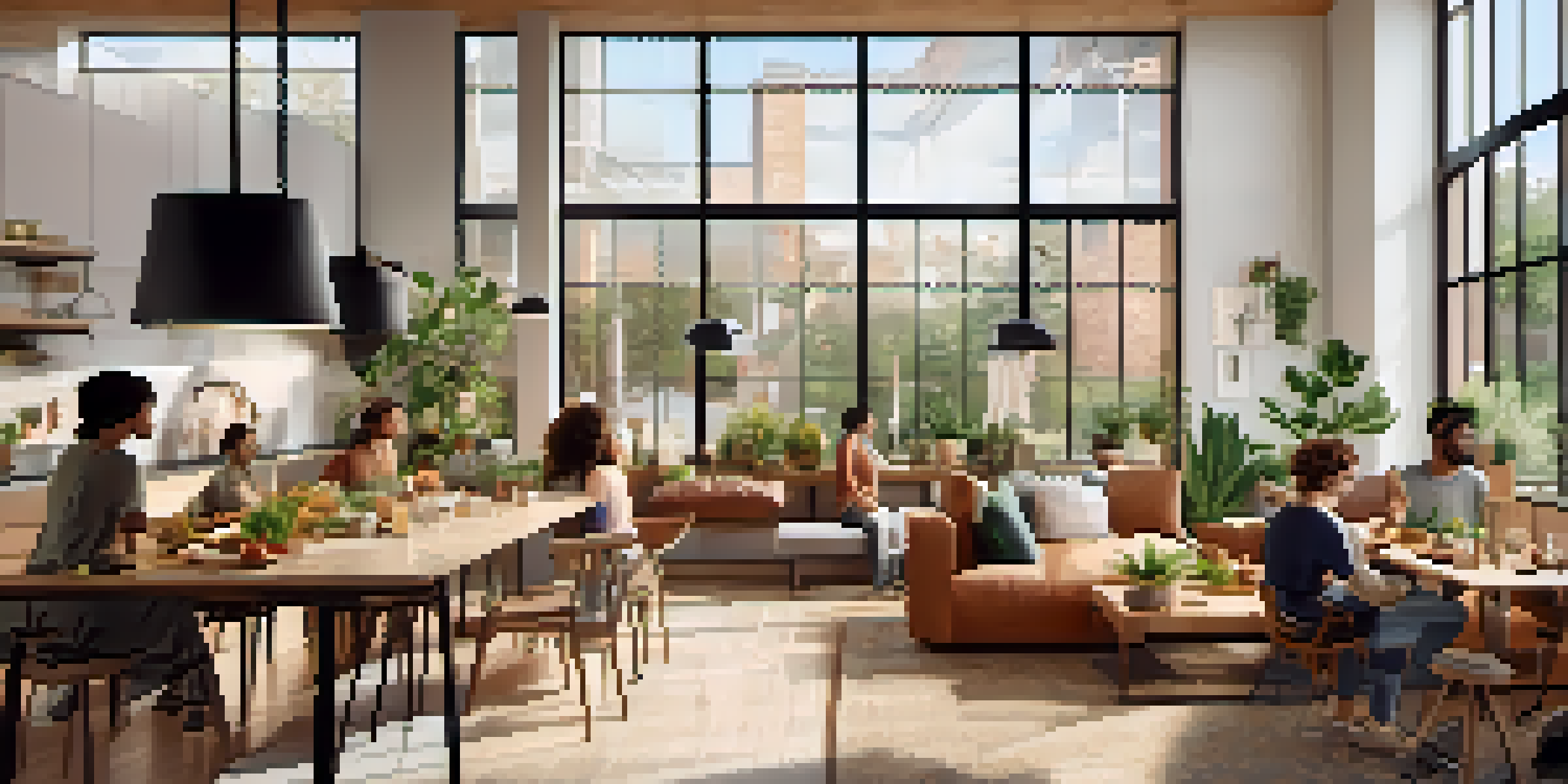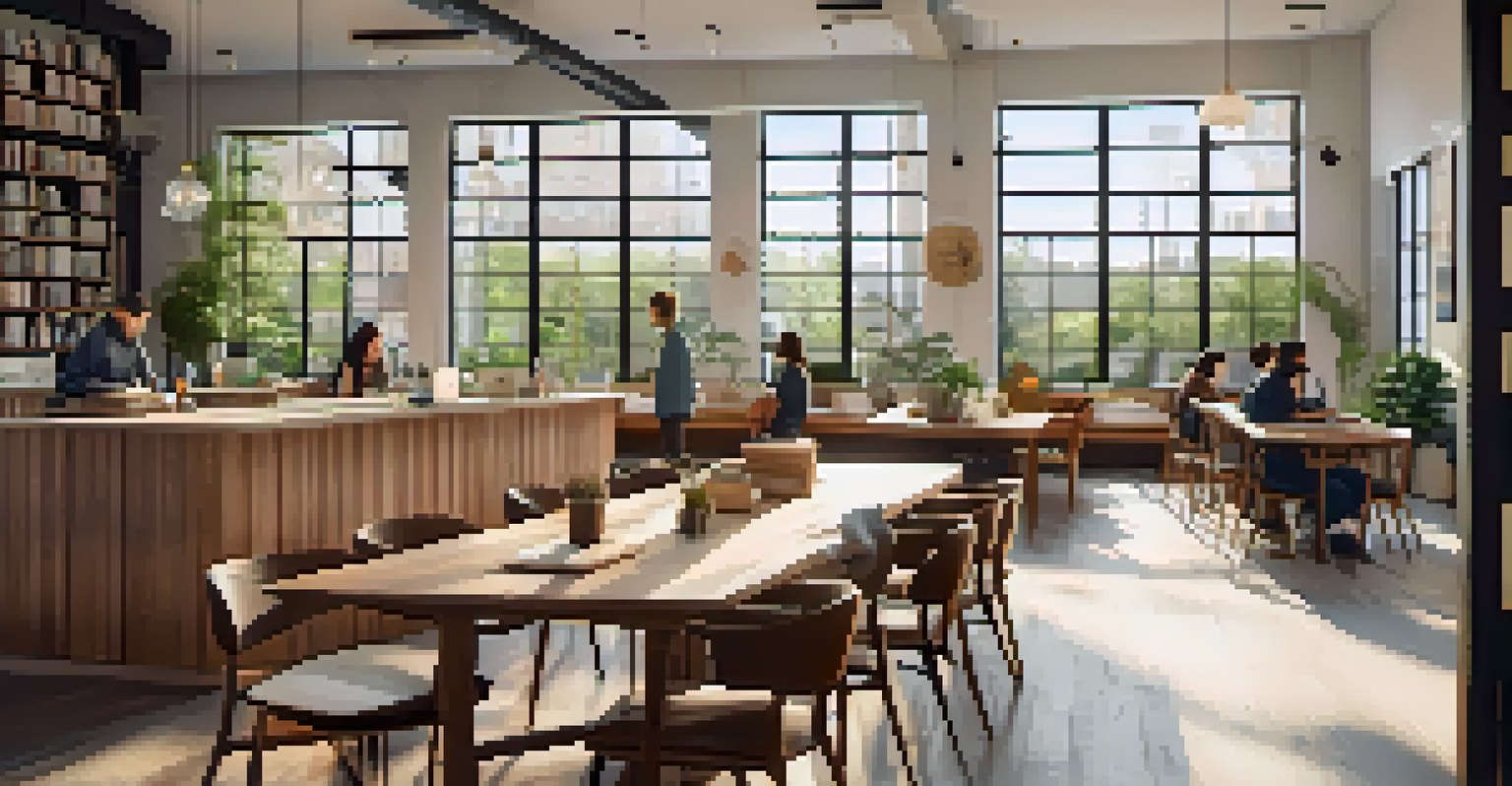Co-Living Spaces: Innovations for Future Urban Communities

What Are Co-Living Spaces and Why Do They Matter?
Co-living spaces are communal living environments designed to foster collaboration and community among residents. They typically feature private bedrooms alongside shared amenities like kitchens, lounges, and workspaces. This arrangement caters to a growing demand for affordable housing in urban areas while promoting social interaction and a sense of belonging.
We don’t just want to live in a place; we want to live with a community.
The importance of co-living spaces extends beyond just providing shelter. They represent a shift in how we view property and community, especially in bustling cities where isolation can be prevalent. By encouraging shared experiences and resources, co-living spaces help combat loneliness and create networks of support among residents.
As cities evolve, so do the needs of their inhabitants. Co-living spaces not only address housing shortages but also adapt to the changing lifestyles of millennials and Gen Z, who prioritize experiences and community over traditional homeownership. This transformation is essential for sustainable urban development.
Innovations Driving the Co-Living Movement
Recent innovations in co-living spaces have introduced technology and design concepts that enhance the living experience. From smart home features that streamline daily tasks to sustainable building materials that reduce environmental impact, these advancements play a key role in attracting residents. For instance, many co-living spaces now incorporate IoT devices to manage energy use efficiently.

Another significant innovation is the integration of flexible lease options and customizable living arrangements. This approach allows residents to adapt their living situations according to their personal and professional needs. The ability to easily change living spaces or share accommodations with friends fosters a more dynamic and responsive community.
Moreover, the rise of remote work has led to the incorporation of co-working spaces within co-living environments. This blend of living and working spaces not only meets the demands of modern professionals but also encourages collaboration and networking among residents. Ultimately, these innovations redefine what it means to live and work in urban settings.
The Role of Community in Co-Living Spaces
A defining feature of co-living spaces is the strong sense of community they cultivate. Residents often participate in communal events, workshops, and social gatherings that foster connections and friendships. This emphasis on community helps individuals feel more engaged and supported in their daily lives.
Alone we can do so little; together we can do so much.
Creating connections within co-living spaces can lead to unexpected collaborations and partnerships. For example, residents with diverse skills and backgrounds may find opportunities to work together on projects, whether personal or professional. This synergy not only enriches their individual experiences but also contributes to a dynamic living environment.
Furthermore, the community aspect of co-living spaces can enhance mental well-being. Living in a supportive environment where individuals share common interests and goals can significantly reduce feelings of loneliness and isolation. Ultimately, these communities create a nurturing atmosphere that benefits all residents.
Sustainability Practices in Co-Living Spaces
Sustainability is a growing focus in the development of co-living spaces. Many projects prioritize eco-friendly design principles, such as energy-efficient appliances, solar panels, and green roofs. These features not only reduce the environmental footprint but also promote a healthier lifestyle for residents.
In addition to energy efficiency, co-living spaces often encourage sustainable practices among residents. Initiatives like community gardens, recycling programs, and shared transportation options help instill a sense of responsibility toward the environment. This collective effort fosters a culture of sustainability that can extend beyond the walls of the co-living community.
Moreover, the shared nature of co-living reduces resource consumption overall. By pooling resources like kitchenware, appliances, and even vehicles, residents can significantly lower their individual carbon footprints. This collaborative approach to living not only benefits the environment but also creates a sense of shared purpose.
Challenges Facing Co-Living Spaces
Despite their many advantages, co-living spaces also face challenges that need addressing. One major issue is the balance between privacy and community engagement. While communal living offers social opportunities, some residents may struggle with the lack of personal space or quiet time, leading to potential conflicts.
Additionally, managing diverse personalities and lifestyles within a co-living environment can be complex. It’s essential for property managers to establish clear guidelines and foster open communication among residents to minimize friction. This proactive approach can help maintain a harmonious living atmosphere for everyone involved.
Furthermore, as the popularity of co-living spaces grows, so does the risk of commercialization. Maintaining the original spirit of community and collaboration can be challenging when properties prioritize profitability over resident satisfaction. Ensuring that co-living spaces remain accessible and community-focused is crucial for their long-term success.
The Future of Co-Living Spaces in Urban Areas
Looking ahead, the future of co-living spaces appears promising, particularly in urban areas where housing demands continue to rise. As cities grapple with affordability and sustainability, co-living offers a viable solution that aligns with contemporary lifestyles. With innovative designs and community-driven initiatives, these spaces are likely to flourish.
Moreover, the evolution of remote work and the gig economy will likely influence the growth of co-living. As more people seek flexible living arrangements, co-living spaces can adapt to meet these demands by offering short-term leases and shared work environments. This flexibility positions co-living as an attractive option for a mobile workforce.
Ultimately, the success of co-living spaces will depend on their ability to balance community, sustainability, and innovation. As they continue to evolve, these spaces have the potential to redefine urban living, making it more connected, affordable, and environmentally responsible.
How to Choose the Right Co-Living Space for You
Choosing the right co-living space can feel overwhelming, but a few key factors can simplify the process. Start by identifying your priorities, such as location, amenities, and community dynamics. Consider what aspects of communal living are most important to you—whether it’s social activities, workspaces, or sustainability initiatives.
Next, research different co-living options in your desired area. Many co-living spaces offer virtual tours or open houses, allowing you to experience the environment firsthand. Pay attention to the overall vibe and how well it aligns with your preferences; this can greatly impact your living experience.

Finally, don’t hesitate to reach out to current residents or property managers with questions. Their insights can provide valuable information about the community and help you gauge whether a particular space is the right fit. With a little research and reflection, you’ll be well on your way to finding a co-living space that suits your lifestyle.